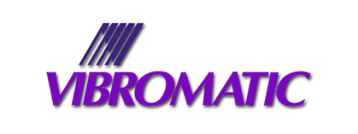Understanding Vibratory Feeders: An Introductory Overview
A vibratory feeder is a mechanical device that conveys bulk materials along a vibrating conveyor or feeder tray. It is commonly used in industries such as mining, pharmaceuticals, food processing, and automotive manufacturing for tasks such as feeding raw materials, sorting, and packaging. It offers precise control over the feed rate and can handle a wide range of materials, from fine powders to large chunks of material.
This blog will discuss the basics of a vibratory feeder, including how it works and the different types available.
Working Principles of Vibratory Feeders
A vibratory feeder operates based on a combination of mechanical and electronic principles, ensuring the smooth and controlled movement of parts and materials. Explore its working principles below:
Vibration
Vibratory feeders generate controlled vibrations that move materials along the feeder tray. These vibrations can be adjusted in frequency and amplitude to suit the specific material being handled and the desired feed rate. This ensures a consistent and controlled flow of materials or parts, allowing them to move in the desired direction and orientation.
Electromagnetism
A vibratory feeder utilizes electromagnets to create the vibrations necessary for material movement. It features an electromagnetic drive that consists of a magnet and a coil. When an electric current passes through the coil, it generates an oscillating magnetic field that interacts with the feeder’s metal tray, causing it to vibrate. Adjusting the electrical input allows precise control over the feeder’s vibration intensity and frequency.
Control Systems
Modern vibratory feeders have advanced control systems that allow for fine-tuning the feeding process. They include sensors and feedback loops that adjust the vibration parameters in real time, ensuring optimal performance and minimal downtime.
Mechanical Design
The feeder bowl and track design are crucial for ensuring that parts move in the desired orientation. The bowl’s shape, track design, and the addition of various tooling elements all contribute to the efficient handling of parts. Moreover, custom designs tailored to specific parts and materials enhance the feeder’s effectiveness.
Types of Vibratory Feeders
Vibratory feeders come in various types, each designed to handle specific applications and materials.
1. Vibratory Bowl Feeders
Traditional vibratory feeders use a combination of electromagnetic drives and mechanical design to move parts along a track. These versatile feeders can handle various materials, making them ideal for industries such as automotive, electronics, and pharmaceuticals.
2. Flex Feeders
Flex feeders are designed to handle various parts or components with different shapes, sizes, and orientations. They use flexible, interchangeable tracks to accommodate different materials, making them ideal for applications requiring frequent changeovers.
3. Step Feeders
Step feeders use a series of steps or platforms arranged in an ascending pattern to elevate parts to the desired height and propel them forward along the feeder track. The steps guide parts into the correct position, making them suitable for applications that require precise orientation or positioning.
4. Centrifugal Feeders
Centrifugal feeders use a spinning disk or bowl to generate a centrifugal force that moves parts outward. They are suitable for high-speed applications and can handle various parts, shapes, and sizes. This type is often used in conjunction with vibratory feeders for part pre-orientation.
Vibromatic Co.: Your Partner for Cutting-Edge Feeder Solutions
Vibromatic Co. has been a pioneer in the parts-feeding industry since 1956. We offer a comprehensive range of feeders, including vibratory bowl feeders, linear systems, floor feeders, step feeders, and centrifugal feeders. In addition, we provide custom solutions designed for optimal performance to meet diverse industrial requirements.
Contact us today to learn more about our solutions or request a quote to get started!

